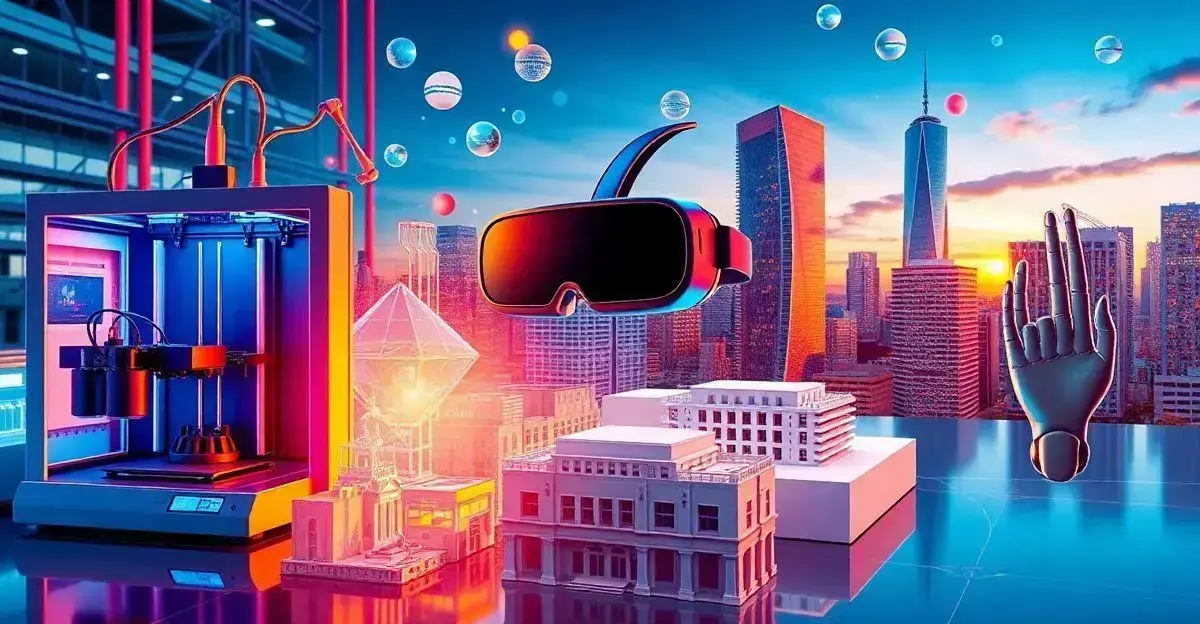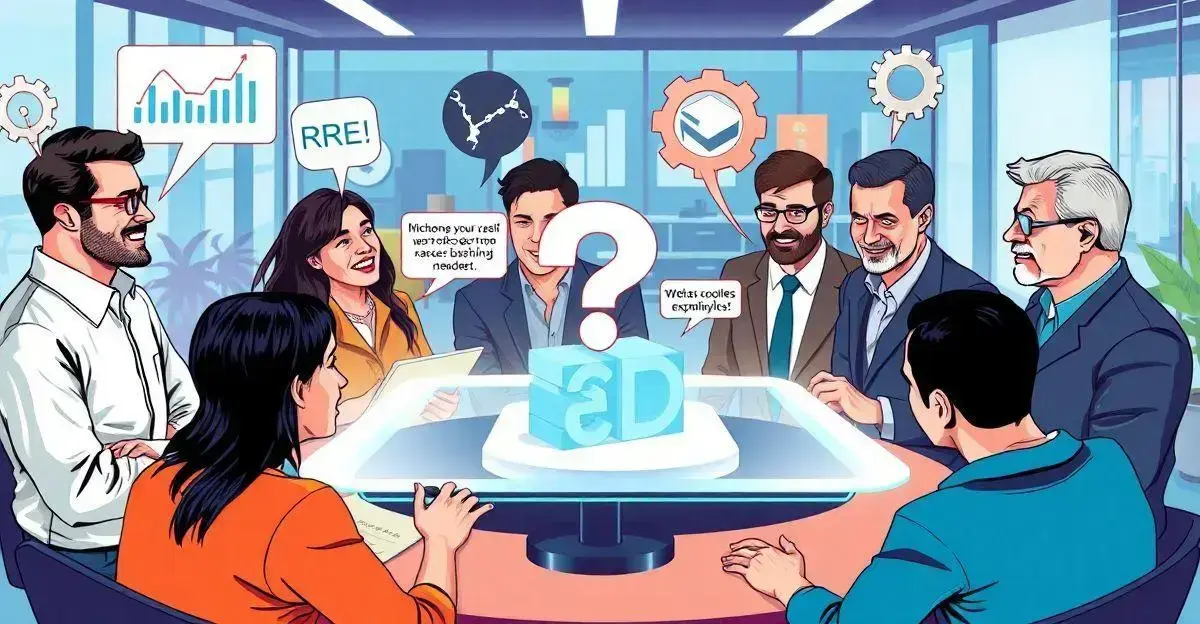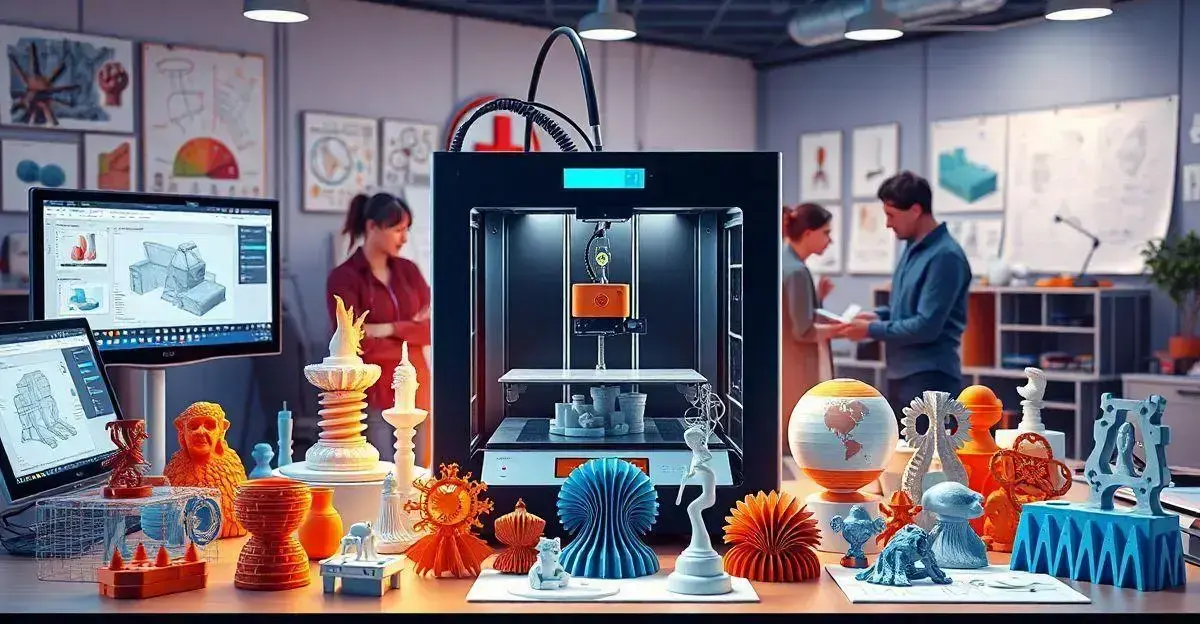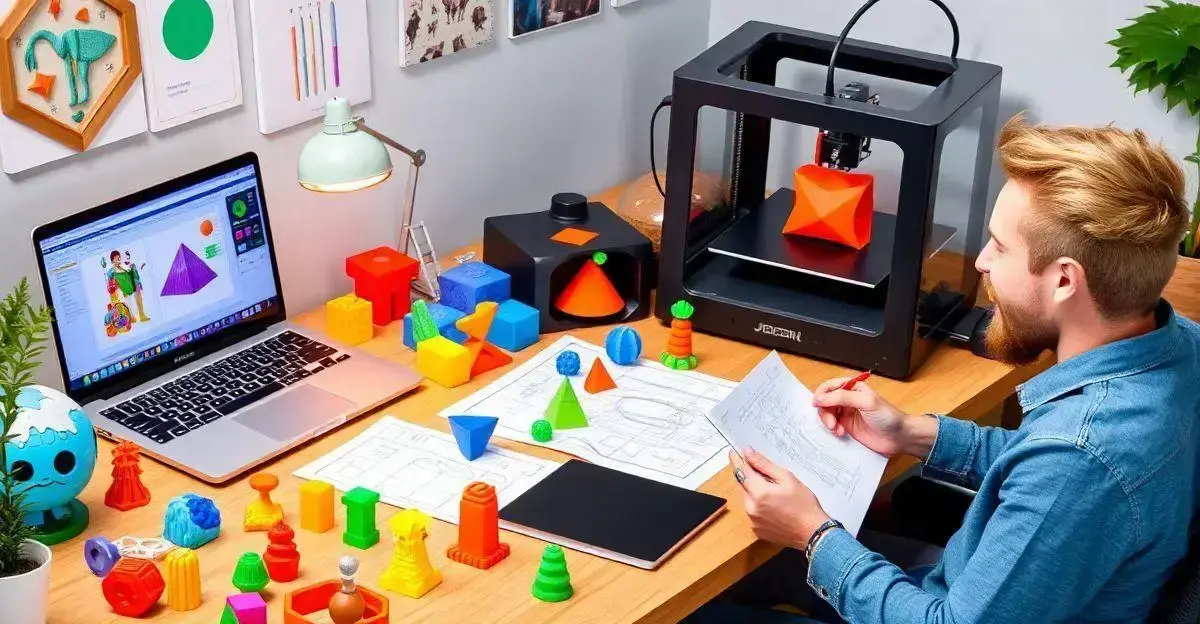3D technology is transforming industries across the globe, offering new ways to create and interact with the world. From healthcare to entertainment, its impact is reshaping how we design, produce, and experience things.
This innovation allows for realistic visualizations, better solutions, and more efficient processes. Whether it’s in architecture, medicine, or gaming, it’s pushing boundaries.
Want to learn more about how it’s transforming various fields? Keep reading to uncover its exciting applications and benefits.
What is 3D Technology?
3D technology refers to the use of computer-generated imagery that simulates a three-dimensional environment. This technology allows objects to be created, viewed, and manipulated in a virtual space. Unlike traditional 2D design, 3D technology offers depth perception, enhancing the realism of images and animations.
This technology is key in various sectors such as gaming, film, architecture, and healthcare. In gaming, for instance, it creates immersive worlds where players can interact with lifelike characters and environments. In the film industry, it contributes to visual effects and animated films that transport audiences to fantastical realms.
In architecture, 3D technology streamlines the design process by allowing architects to visualize spaces before they are built. This helps in identifying possible design flaws, ensuring projects become more efficient and cost-effective.
Moreover, in healthcare, 3D technology is making strides in patient treatment and surgical procedures by creating detailed, accurate models for planning surgeries or printing medical devices tailored to individual needs.
In summary, 3D technology is transforming multiple industries, providing innovative solutions that improve design quality and user experience.
Applications of 3D Technology in Different Fields

3D technology finds usage across various fields, making significant impacts in areas such as manufacturing, healthcare, and entertainment.
In manufacturing, 3D printing allows for rapid prototyping, enabling creators to develop and test products faster than ever before. This efficiency leads to innovation in design and production processes.
In healthcare, 3D technology is revolutionizing the way medical devices are developed. Using 3D printing, personalized medical implants and prosthetics can be created, which enhances patient compatibility. Furthermore, 3D modeling is utilized for surgical planning, allowing surgeons to practice procedures on patient-specific models before operating.
Additionally, the entertainment industry benefits greatly from 3D technology, notably in film and video games. It creates immersive environments and lifelike characters, enhancing viewer and player experiences. This technology allows creators to bring fantasy worlds to life in ways that were previously unimaginable.
Moreover, education is also reaping the benefits through 3D technology. Interactive 3D models are used in classrooms to make learning more engaging, helping students understand complex concepts in subjects like science and geometry. With this technology, educators can provide hands-on learning experiences that capture students’ attention.
In conclusion, the applications of 3D technology reach far and wide, ongoing to change how products are designed, how medical treatment is approached, and how we engage with entertainment and education.
Benefits of Using 3D Technology
Using 3D technology offers several key benefits that enhance various industries. First, it allows for rapid prototyping, which significantly speeds up the design process. This quick turnaround means that businesses can test ideas and concepts in real-time, leading to faster innovation.
Another benefit is the reduction of costs. Traditional manufacturing methods often require expensive molds and materials. In contrast, 3D printing can produce complex components with less waste and fewer resources, lowering overall production costs.
Customization is another critical advantage of 3D technology. Companies can easily modify designs to meet specific customer needs. This ability to create tailored products enhances customer satisfaction and can lead to increased sales.
Furthermore, 3D technology enables the creation of intricate designs that are difficult or impossible to achieve with traditional methods. This allows for greater creativity and innovation in design, giving businesses a competitive edge.
Lastly, 3D technology promotes sustainability. By using only what is necessary for production, businesses can minimize waste and reduce their environmental footprint. Additionally, the ability to produce items locally can decrease the carbon footprint associated with shipping products worldwide.
Challenges Facing 3D Technology Adoption

Despite the advantages of 3D technology, there are several challenges that hinder its widespread adoption. One significant challenge is the high initial cost of 3D printers and materials. For many businesses, investing in this technology can be a considerable financial burden, especially for small enterprises.
Another challenge is the lack of skilled professionals who can effectively operate and maintain 3D printing systems. As the field is still relatively new, there is a gap in training and education, making it difficult for businesses to find qualified personnel.
Moreover, intellectual property issues arise with 3D printing. As designs can be easily replicated, protecting original ideas and inventions becomes complicated. This can discourage companies from adopting the technology for fear of losing their competitive edge.
Finally, there are also concerns regarding materials limitations. While the range of materials available for 3D printing is growing, it still does not match the variety offered in traditional manufacturing. Some industries may require specific materials that cannot yet be used with 3D printing, limiting its effectiveness in those fields.
Future Trends in 3D Technology
The future of 3D technology is marked by several key trends that are shaping its evolution.
Bioprinting is one of the most exciting advancements, allowing for the printing of biological tissues and organs, which could revolutionize medicine and potentially reduce transplant waiting lists.
Cloud-based 3D Printing is another significant trend, enabling access to printing services online. This makes it easier to create prototypes without the need for expensive hardware, effectively democratizing the technology.
Sustainability is also becoming a focal point, with an exploration of recyclable materials in 3D printing. This shift is reshaping product design and manufacturing processes to minimize ecological impact.
Furthermore, there are advancements in software technology, leading to the emergence of intuitive design tools. These tools allow users without extensive skills to create complex 3D models, fostering wider adoption of the technology.
Lastly, the integration of AI and machine learning is enhancing the design process by analyzing previous designs and suggesting improvements. This streamlines production and improves the quality of final products.
How 3D Technology Enhances Product Design

3D technology enhances product design in several ways, making the process more efficient and innovative. First, it allows for rapid prototyping, enabling designers to create and test physical models quickly. This speed helps in refining concepts and making adjustments based on real-world feedback.
Additionally, 3D modeling software provides tools for detailed visualization of designs before they are manufactured. This means teams can see and modify products in a digital space, reducing the chances of errors and improving overall design quality.
Moreover, 3D technology encourages collaboration. Multiple stakeholders can access and review the models simultaneously, facilitating input from various experts. This leads to richer ideas and better final products.
Another significant benefit is the ability to create complex geometries that would be difficult or impossible with traditional manufacturing. This opens up new possibilities in design, allowing for innovative shapes and functions that enhance the performance and aesthetics of products.
Finally, by integrating 3D printing into the design process, companies can achieve customization on a larger scale. Tailoring products to meet individual customer needs becomes feasible, significantly improving user satisfaction and loyalty.
3D Technology in Healthcare Innovations
3D technology is transforming the healthcare industry in remarkable ways. One of the most exciting applications is in the creation of custom implants and prosthetics. By using 3D printing, healthcare professionals can create personalized devices that perfectly fit the patient’s body, enhancing comfort and functionality.
Another important innovation is surgical planning. Surgeons can use 3D models based on patient scans to practice complex procedures before the actual surgery. This method improves precision and reduces risks during operations.
Additionally, 3D technology allows for the production of bioprinted tissues. This breakthrough can lead to advancements in regenerative medicine, potentially paving the way for organ transplants and drug testing without the ethical concerns associated with animal testing.
Moreover, educational tools that employ 3D models enhance medical training significantly. Medical students can interact with lifelike representations of anatomy, improving their understanding and skills.
In summary, the applications of 3D technology in healthcare are vast and varied, providing innovative solutions that improve patient outcomes and revolutionize medical practices.
Getting Started with 3D Technology: A Beginner’s Guide

Getting started with 3D technology can seem overwhelming, but it is easier than you think. First, you need to understand the basics of 3D printing. This technology allows you to create three-dimensional objects from a digital file. You can design your own objects using 3D modeling software or download existing designs from online libraries.
Next, choose a 3D printer that fits your needs. There are various types available, such as FDM printers, which use filament to build objects, and resin printers, known for their high detail. Consider your budget and what you wish to create when making your choice.
Once you have your printer, it is essential to learn how to operate it. Start with simple projects to get familiar with the process. Many online tutorials can guide you through the steps of setting up and using your 3D printer successfully.
Finally, join communities and forums where you can interact with other 3D enthusiasts. Sharing experiences and tips can help you improve your skills and inspire new ideas. With practice and the right resources, you will soon be creating impressive 3D prints!
Final Considerations
3D technology is reshaping the landscape across various industries, offering innovation and efficiency. Its application in healthcare, product design, and manufacturing demonstrates its value in enhancing processes and outcomes.
As businesses look to the future, embracing 3D technology can lead to improved custom solutions and significant cost savings. The benefits, from rapid prototyping to sustainability, make this technology a vital component for growth.
Additionally, ongoing advancements in 3D technology will likely open new frontiers, further solidifying its role as a critical asset. By integrating these tools, companies can not only stay competitive but also set the stage for future innovation.
Do not hesitate to explore 3D technology for your business; the time to act is now!